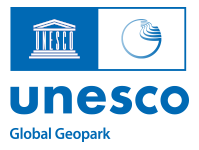
European Geoparks Network
The European Geoparks Network (EGN) was established in mid-2000 and it was formed by 4 natural areas: the Geological Reserve of Haute Provence in France; the Natural History Museum of the Petrified Forest of Lesvos in Greece; Geopark Vulkaneifel in Germany and Maestrazgo Cultural Park in Spain.
The primary objective of this network is to conserve geodiversity in order to promote geological heritage to the general public as well as to support the sustainable economic development of the Geopark territories, mainly through the development of geotourism.
In 2023 this Network includes 98 European geographical areas.
Principles of the European Geoparks Network Charter
- A European Geopark includes a geological heritage of particular importance in a defined territory. The Geopark has to establish a strategy for sustainable territorial development. The geological resources of a Geopark, in addition to being of geological interest (according to their scientific quality, rarity, aesthetic value or educational value), may also be of archaeological, ecological, historical or cultural interest.
- The Geoparks integrated within the Network benefit from common protection and management measures. They have to be managed by a well-defined structure that can act throughout their territory. A Geopark must be able to guarantee the protection and conservation of its heritage and the improvement and sustainable development of the territory. A Geopark is not allowed to encourage the destruction or trade and sale of geological material, and in this respect it will be governed by the Charter of the World Geoparks Network (see below).
- A Geopark has to work actively for the sustainable economic development of the territory linked to geotourism and geological heritage. It must contribute to promoting the values of the territory as a whole and involve its inhabitants.
- A Geopark is committed to developing, researching and working for the continuous improvement of methods for the conservation and assessment of geological heritage.
- A Geopark plays an important role in scientific research, training and environmental education.
- A Geopark is committed to strengthening the cohesion of the European Network, it has to collaborate with other Geoparks and work together with local entrepreneurs to achieve a balance between economic development and conservation.
Some Frequantly Asked Questions about the European Geoparks Network (EGN)
1.- What is the main aim of the Network? The main aim of the Network is to support its members to bring sustainable territorial development to the geopark by using that territory’s geological heritage, primarily through the development of geotourism. The Network is responsible for the assessment of its members’ operation and services in order to promote the “European Geoparks” label as a high quality brand in geotourism.
2.- How can I benefit from memebership of the EGN? Members of the Network are entitled to use the registered “European Geopark” brand as a mark of quality. Members benefit from the use of common promotional tools (i.e. website, magazine etc…) and have a forum for finding new partners for international co-operation, exchange of experience and for seeking funding from EU programmes. It is important that all members participate as active members of the Network.
3.- How is the work of the Network financed? The activities of the Network are financed by the individual members (see item 25). Members also seek funding for new initiatives and activities through EU funding programmes (LEADER, INTERREG etc.)
4.- What are the typical activities of a European Geopark? There are a variety of activities that can be considered typical of a Geopark. Most are either geotourism or educational-based, including schools programmes, guided walks and museum exhibitions. Geological heritage protection and promotional activities are also essential activities of a geopark. Socio-economic activities in geoparks are important for sustainable regional development. Geoparks adopt a holistic approach to their heritage and promote all aspects of their region’s natural and cultural heritage.
5.- What kind of organization is the EGN? The European Geoparks Network is a voluntary, co-operative organisation. It has a clearly defined internal structure comprised of two co-ordinators, an advisory committee and a co-ordination committee. Decisions are only taken by the co-ordination committee which integrates the representatives of the geoparks and UNESCO.
6.- Is there a subscription fee for the Network members? There is no subscription fee for Network members. Members however, incur costs by attending meetings and actively working within the Network. Members also pay an anual contribution of €500 related to the costs of joint promotion and €1000 to support UNESCO.
7.- Has a European Georpark a minimum or maximum size? According to the Network’s charter, a geopark must have a sufficiently large surface area to support a sustainable development strategy. It must have a clearly defined boundary and it must be managed by a clearly defined management structure.
8.- Are there any statutory restrictions attached to being a member of the EGN? No, the European Geopark designation has no legal status and does not imply any level of protection or restriction within a geopark’s territory. Such measures can only ensue from national legislation.
9.- Is the collecting of original geological material (e.g. rocks, minerals, fossils) permitted within a geopark? Yes, the collecting of original geological material is permitted within a geopark provided that is done in a sustainable manner or for scientific/educational purposes and that it is carried out under scientific supervision and in accordance local legislation.
10.- Is the selling of original geological material permitted within a geoprak? No, the selling or destruction of the geological value of a geopark or of material either from within the geopark or from anywhere else in the world by organisations that form part of the geopark structure and/or are permitted to use the European Geoparks brand is not permitted. Precise details concerning this aspect of the charter is available upon request, but typically it refers to fossils, polished rocks and mineral specimens of the type normally found in so-called “rock shops”. It does not refer to quarried or mined material for industrial or domestic use that is quarried or mined under national legislation.








